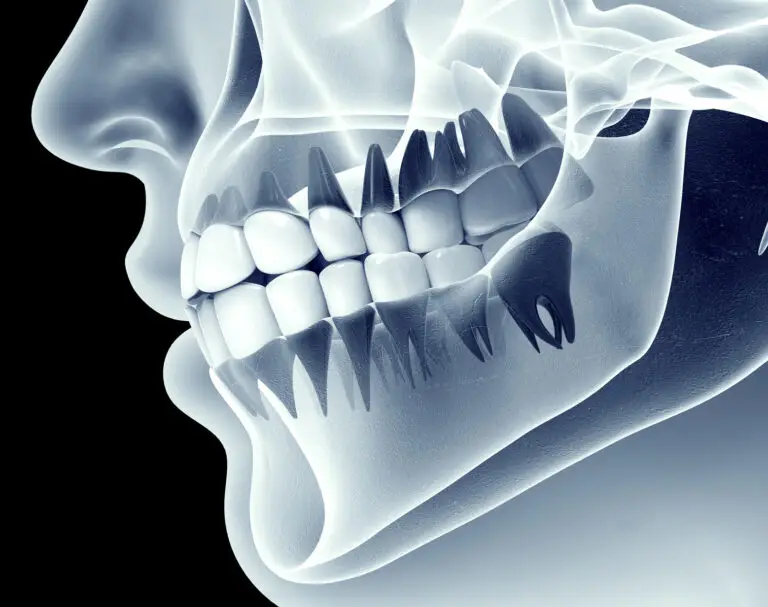Digital X-Rays Technology
Digital radiography (Digital X-Ray) utilizes electronic sensors to identify and produce high-resolution images of the oral cavity, teeth, supporting structures, etc. The major benefit of these digital images is that they can be instantly viewed on a computer screen. This further allows dental professionals to assess the patient’s dental health quickly & accurately.
Another benefit of digital radiography is its ability to reduce radiation exposure significantly. Compared to traditional X-rays, digital radiography requires up to 80% less radiation, ensuring patient safety without compromising diagnostic quality. It helps patients who may require multiple X-rays throughout their treatment because they don’t have to undergo the radiation multiple times.
The speed and convenience offered by digital radiography are unparalleled. The images are captured instantly and can be viewed on the computer screen within seconds, eliminating the need for film processing. It saves time and it also enables the dental professional to make prompt decisions regarding their patients’ treatments.
In the process of dental care, X-rays are one of the most important, but not the only, tools a dentist and a hygienist uses. They provide information that isn’t visible during a dental exam and help to detect hidden problems. Without these X-rays, detecting these problems become difficult. X-rays are essential tools for safe, accurate detection of any problem areas.


Dental X-rays may reveal:
- Abscesses or cysts.
- Bone loss.
- Cancerous and non-cancerous tumors.
- Decay between the teeth.
- Developmental abnormalities.
- Poor tooth and root positions.
- Problems inside a tooth or below the gum line.
Detecting and treating dental problems at an early stage can save you time, money, unnecessary discomfort, and your teeth!
Are Dental X-Rays Safe?
Patient safety is crucial when it comes to dental imaging. Digital X-rays are safe & have been proven to be a safe and reliable diagnostic tool because digital X-rays require significantly less radiation when compared to conventional X-rays. Therefore, the patients experience significantly lower radiation exposure during digital X-ray procedures.
The amount of radiation emitted during digital X-rays is already minimal, even when compared to background radiation levels that we are exposed to in our daily lives. Additionally, dental professionals take precautions to ensure that patients receive the lowest effective radiation dose during X-ray examinations. Lead aprons and collars are often used to shield other parts of the body, further reducing exposure.
Digital X-rays also offer the advantage of immediate image display, eliminating the need for repeat exposures and reducing overall radiation exposure. With digital X-rays, dental professionals can review the images in real-time, ensuring accuracy and minimizing the need for additional X-rays.
How Often Should Dental X-Rays Be Taken?
There are several things your dentist will need to consider before recommending necessary X-rays. Some of these criteria include your dental history, symptoms, age, and the severity of the disease, your dentist will recommend necessary X-rays.
A full mouth series of dental X-rays is recommended for new patients. A full series is usually good for three to five years. Bite-wing X-rays (X-rays of top and bottom teeth biting together) are taken at recall (check-up) visits and are recommended once or twice a year to detect new dental problems.
If you have very few or no teeth or if you have only a few dental fillings, you may not need an X-ray.
